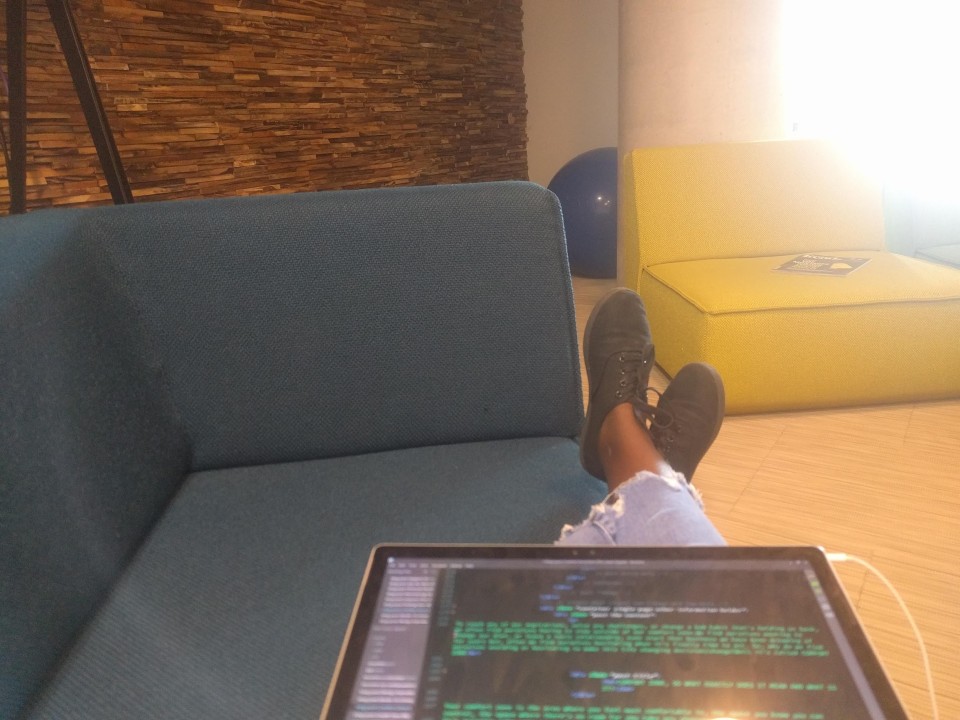
There used to be a time when we thought or heard the world TECH, we automatically had in mind the vision of a geek guy wearing glasses, living in his mom’s basement and sitting in a dark corner and expressing himself in a language of his own.
Thank God the idea has evolved over time. But on the other hand, one thing has not changed: Every time, someone asks me what I do and I say am a developer they are actually surprised or simply don’t believe me because of how I dress or look.
It actually feels like the world has forgotten its history because the first Coders Were Women in the 1940s, don’t believe me? read your history here:
As you can see women have not been strangers in the world of computing, calculating machines, cybernetics or programming.
If you need an inspirational and moving movie to watch I implore you to read Margot Lee Shetterly’s book Hidden Figures or watch its 2017 film adaptation, it really did help me understand and fill in some gaps in the historical record regarding influential black female mathematicians—such as:
- Dorothy Vaughan, an expert in the FORTRAN programing language, she worked for NACA’s (now known as NASA) West Area Computing unit, which was a group of African American female mathematicians who were considered at that time “human computers,” they were tasked with performing complex computations and analyzing data for the aerospace engineers. Read More Here
- Grace Murray Hopper was responsible for developing the 1st compiler for a computer programming language. She was a US Navy Rear Admiral, and in 1973 she became the first person from the USA and the first woman to ever to be made a Distinguished Fellow of the British Computer Society. Read More Here
- Katherine Johnson is a physicist and mathematician who is widely recognized for her contribution to NASA. She calculated the trajectories of the shuttle Apollo 11. Read More Here
- Ada Lovelace contributions to the field of computer science were not discovered until the 1950s. Her notes were reintroduced to the world by B.V. Bowden, who republished them in Faster Than Thought: A Symposium on Digital Computing Machines in 1953. Read More Here
- Mary Jackson is a mathematician and aerospace engineer. She campaigned to be accepted at the University of Virginia to move from being a mathematician to being an engineer. This university was for the whites, so she had to beg a judge from the city of Virginia to be granted the right to attend evening classes. Read More Here
- Hedy Lamarr is the of wireless communications following her emigration to the United States. With her co-inventor George Antheil, they developed a “Secret Communications System” to help combat the Nazis in World War II. By manipulating radio frequencies at irregular intervals between transmission and reception, the invention formed an unbreakable code to prevent classified messages from being intercepted by enemy personnel. And that to her technology the digital communications was born, forming the technical backbone that makes cellular phones, fax machines and other wireless operations that we use today possible. Read More Here
The film really moved and inspired me to be proud of my career choice and it gave me hope for my vision of seeing more women leading digital and getting their freedom with the help of digital tools.
But unfortunately, over time, stereotypes about the tech field shifted to the point that coding came a task more suited for men than women. If you would like to ready about the different factors that contributed to the digital shift In the 1950s and ‘60s, check out “Computer Boys Take Over: Computers, Programmers, and the Politics of Technical Expertise (History of Computing)” by Nathan L. Ensmenger
As you can see, there has always been space for women in the STEM field. And I truly believe with the technologies these women have contributed to creating there a many more “hidden figures ou there” whose contributions in the world of STEM have yet to be credited and it’s our duty to history for the next generation to write about their contribution in history.
So how do I stay inspired as a woman in the tech world and continue my work to inspire the next generation?
- I never let obstacles stop me from my goal.
- I surround my self with people that help my talent and person grow to the woman I want to be.
- Don’t be afraid to“Ask For Help.”
- With the support I got, I get to Support others
Did you make this post?
Please let me know by leaving a comment below and tag @she_is_digital on Instagram.

